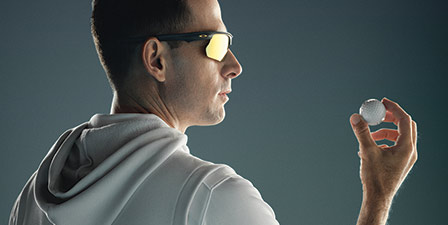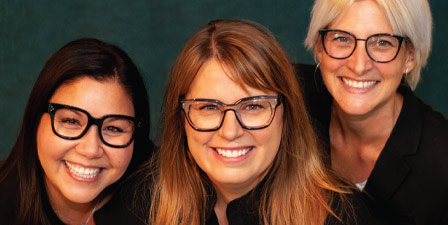In April, Etnia Barcelona announced what it described as “an important structural change at the company,” with David Pellicer, president and founder, returning to take over management of the family-run business. 20/20 Europe spoke to the incoming CEO as the restructuring was announced.
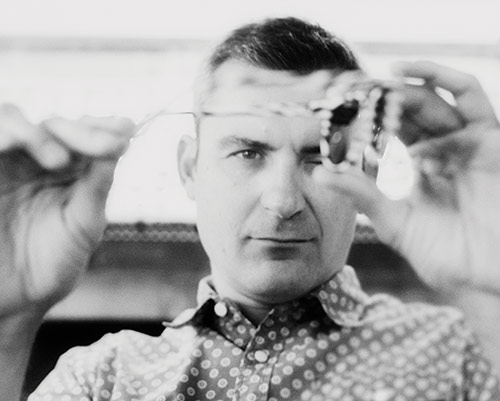
by Clodagh Norton
Etnia was founded in 2001 and started to grow with significant momentum in 2003. Since that time, what have been the most important moments in the brand’s evolution?
After breaking away from the simplicity of the eyewear that existed at the time, Etnia Barcelona created the Ibiza and Pop collection with fluorescent colors and transparencies. At this moment, Etnia created a direct alliance with the creative and art worlds. In terms of business, in 2004 Etnia set up its own distribution network in the U.S. and exhibited for the first time at Vision Expo East (NYC), which allowed the company to expand in markets such as Canada, France and Italy.
In 2010, after years of growth, the company decided to improve its control over the manufacturing process, acquiring the first factory. Afterwards, Etnia Barcelona opened the first prototype plant at the head office in Barcelona and enhanced the design and production process.
At the same time, we started our artist collaborations, first with the photographer Nabuyoshi Araki, followed by Yves Klein Blue and then the Wild Africa collection shot by Steve McCurry. We also created a collection in honor of the artist Michael Basquiat and held a big event for this in Brooklyn.
In 2017, we opened our first flagship store in Barcelona, designed by Lazaro Rosa-Violan. The modernist building transmits our DNA, recalling our Mediterranean character and the unique architecture of Barcelona.
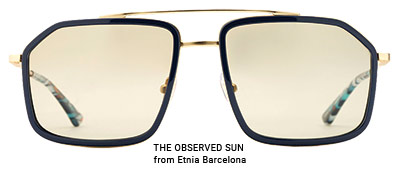
Your father was involved in frame manufacturing, is that right? What part of the business has been most exciting for you personally when you first started working with your dad at 17?
When I was 20, I started to work as a vendor. I alternated this with my work in the Etnia factory. This was very exciting because it gave me my initial experiences in the optical world. Since then I have led the company from the forefront of the design department, using all my families’ advice on how to make intelligent and qualitative decisions, and to pay special attention to detail.
I focused on the idea of being free, being human, being multi-ethnic and cultured. Our collection boasts bold designs for all types of people and original colorways that emphasize the personality.
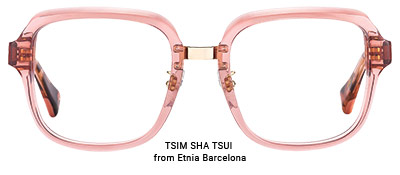
Growth has been steady and significant since the opening in 2004 of the distribution in the U.S. How has this success been achieved, and what are the combination of factors that have made it possible?
It is a combination of factors that has led to Etnia’s steady growth. We have seen double digit annual growth in the U.S. since 2004. Etnia’s products are designed to meet the needs of the U.S. population—with unique colors, best-in-class quality and a solid warranty service. However, the collection needs to constantly evolve, and this is, in fact, one of the objectives of this year: to ensure we have a U.S. specific collection addressing current customer’s needs.
Secondly, our positioning as a brand linked to art and culture sets us apart from the competition. This part of our character has earned us a unique place in the optical shops.
Furthermore, we have relied from the beginning on an enthusiastic and dedicated American sales force, who travel hundreds of kilometers each day. With their effort and perseverance, they are leading Etnia’s success in the U.S. We also have our established local office in Miami with its own warehouse, ensuring a top quality distribution in this vast region. All in all, these factors have allowed us to have a strong position in the U.S., reaching more than 8 million (euros) sales in 2018, and we expect to continue to grow this in the coming years.
The opening of the flagship store in Barcelona was a key moment for the company. Would you agree and how do you now reflect on this addition to the business? Can we expect more Etnia stores?
The opening of our flagship has been one of the most important milestones in the last few years. While we have committed to being the best partner for the optician, we needed to have direct feedback from the end consumer through our own store in the heart of Barcelona. With its concept and design, it is an amazing place to discover Etnia, the spirit, values and legacy of the brand. The results have been amazing, and we are extremely happy with the interesting input that we are getting from customers and opticians alike. Of course, we are assessing the possibility of opening new retail projects in the future in key places around the world.
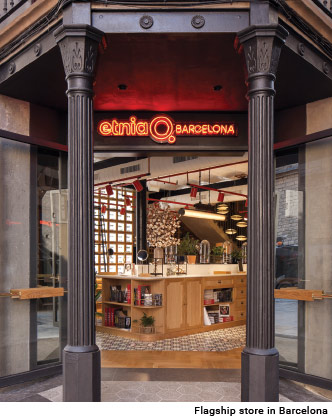
What is your strategy today as regards the collection launches? Can we expect to see more limited editions and arts related projects?
Of course. We will continue to work with different concepts, limited editions and artists as one of the fundamental pillars of our strategy to continue being the trendsetter in this exciting market. This is part of our DNA, and in fact, we are preparing a very impactful capsule for next season that we hope will be a success.
We have also made a step forward in our Core collection “architecture,” making it more focused on our consumers’ needs
This year you have launched a titanium line—your first collection produced in this material. Why have you chosen this new route?
In Etnia Barcelona we are always thinking of new ways of surprising our customers, and developing the best high-quality materials is one of them. Etnia stands for quality, and therefore, we had to try to do the best titanium designs, since this material is characterized by its resistance, while giving flexibility and lightness to a pair of glasses.
The Titanium Collection is more than a collection. It’s a journey through the most remote places of Japan that transports us through its age-old culture, tradition and craftsmanship. It’s an adventure that led us to create a collection with 100 percent Japanese pure titanium. This collection has a piece of Japan’s rising sun in each of its pieces: combinations of traditional colors that commemorate artisan workshops, minimal round shapes inspired by the Zen philosophy and engravings that remind us of the armour of the ancient samurai.
What are your ambitions in 2019 overall?
Right now, Etnia Barcelona is starting to deploy its five year strategic plan, focusing in 2019 on two main aspects. First, we wish to strengthen our relationships with opticians and build a successful partnership with them, being able to guarantee the best quality of service. On the other hand, we aim to boost growth in the next years, and for this reason, we are investing in having the best manufacturing capabilities in place through new factories, increasingly agile processes and the addition of new advanced tools.
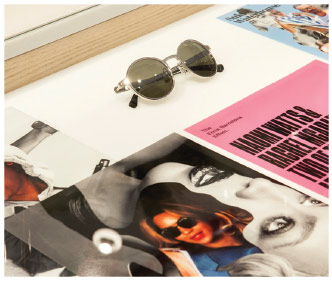
What is your view of the optical market and the growth in small independent brands? Spain—and Catalunya in particular for example—has seen a growth in this area in the last years.
The optical market is growing in almost all European countries and is expected to continue this way for the coming years. This growth has attracted many new brands. Of these, only a few will survive. Succeeding in this market is not easy, and we have seen this scenario many times in the past.
There are several new players arriving each year, and they are doing a great job but they tend to focus on a small niche of consumers who are being addressed by just a few brands.
Finally, is your sales network now complete or are there markets you still have your sights on for the future?
Etnia Barcelona is present in more than 60 countries around the world. However, the importance of this presence is not the same in all of the different regions, and there is still potential for growth in all of them.
As I’ve mentioned, we have identified the needs of each market and have created a collection specifically for them. This, together with the commitment of our sales forces, will help us grow stronger and faster in the coming years. Apart from our main areas, there are other regions under the spotlight in Asia and Latin America, where our presence will be higher in the future. ■



